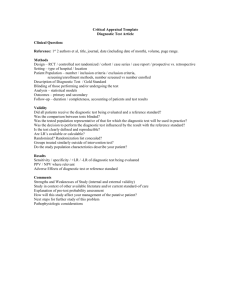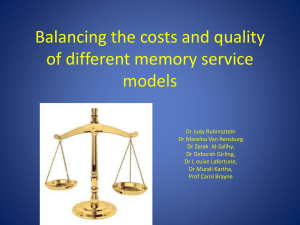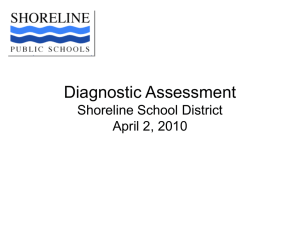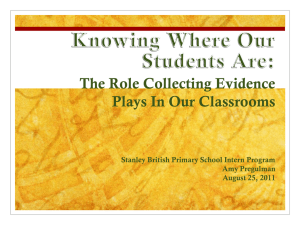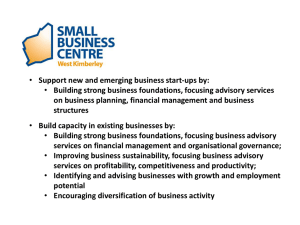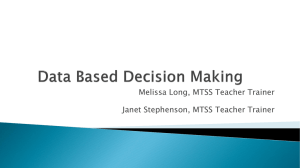Problem Analysis
advertisement
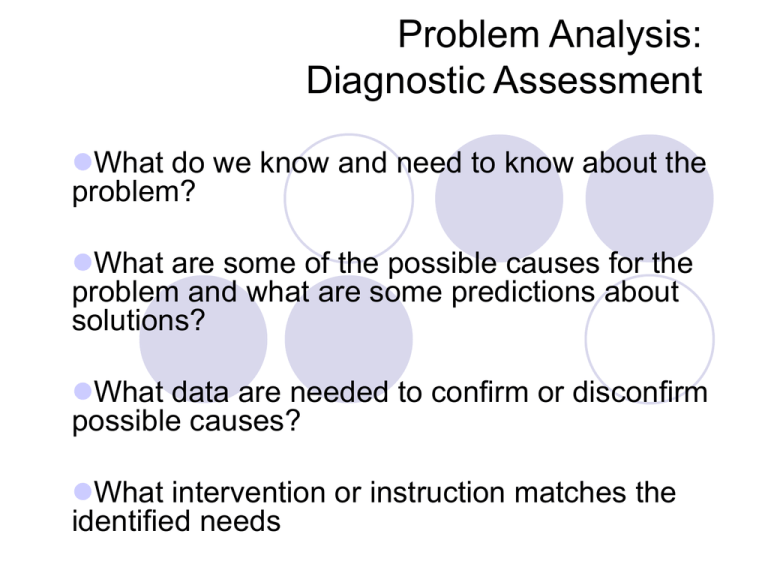
Problem Analysis: Diagnostic Assessment What do we know and need to know about the problem? What are some of the possible causes for the problem and what are some predictions about solutions? What data are needed to confirm or disconfirm possible causes? What intervention or instruction matches the identified needs Structure of PS Model Problem Identification Evaluating Outcome Problem Validation Student Success Plan Development Problem Analysis Why Analyze Problems? Placement does not result in problem solutions. Disability labels lack any utility within problem analysis. Need to know alterable variables for intervention before change can occur What is Problem Analysis? Process of determining alterable variables in order to solve a problem. Instruction Curriculum Environment Link between a quality operational definition (Problem Identification) and a problem solution Process to collect, summarize, and use diagnostic data and information to test, reject, or verify hypotheses (why the problem is occurring) to develop problem solutions (e.g. interventions). (Christ, 2009). Christ, Theodore J. (2008). Best practices in Problem Analysis. In A. Thomas and J. Grimes (Eds.), Best Practices in school psychology V (pp. 159-176). Silver Spring, MD: National Association of School Psychologists. Matching everything known about the problem, with our “best guess” for a solution Remember, same process for CSIP, SINA, Iowa Prof. Dev. Model, PDSA, etc. Is what is causing the problem alterable? Causal Variables Maintaining Variables Focus on solutions in the present, don’t admire the problems past and draw inefficient attention to unalterable conditions of the past Non-alterable variable are only important to discuss if they currently significantly impact current variables. Generating Hypothesis: Why is the Problem Occurring? Low Inference Preferred method of problem analysis If you can observe it or teach it Skills Passes the stranger test High Inference Less preferred method of problem analysis. Labels, less alterable Low-inference approach Low-inference High-inference Johnny hits other kids during recess… because he lacks social skills such as negotiating conflict. because he has an oppositional personality. Caroline is unable to read at grade level… because she doesn’t know vowel sounds and doesn’t efficiently blend sounds when decoding. because she has deficits in rapid automatic naming, which indicates deficits in recall of verbal information. ICEL/RIOT Best practice and approaches of ICEL/RIOT are used to determine the validity of a hypothesis for the purpose of problem analysis Multi method, multi domain and multi source approach ICEL Instruction is how new behaviors or skills are taught. Curriculum is what behaviors or skills are taught. Environment is where the behaviors or skills are taught. Learner is to whom the behavior or skills are taught. Instruction selection and use of materials placement of students in materials Progress monitoring Clarity of instructions Communication of expectation & criteria for success Direct instruction with explanation and cues Sequencing of lesson designs to promote success Variety of practice activities Pace of presentation of new content Curriculum/Content Long range direction for instruction Instructional philosophy/approaches Instructional materials Intent Stated outcomes for the course of study Arrangement of the content/instruction General learner criteria as identified in the school improvement plan, LEA curriculum, benchmarks, and Iowa Core Environment Physical arrangement of the room Furniture/equipment Rules Management plans Routines Expectations Peer context Peer and family influence Task pressure (e.g. Timed tests, Results posted, High stakes testing, SLP-student with selective mutism) Learner Within the Student Curriculum and instruction are appropriate Positive environment Student performance data Academic Social/Behavioral Medical RIOT Review information already available. Interviews are conducted with key individuals who can determine the problem and the relationships between task and settings. Observe in natural settings where problem is most likely to be observed. Test are a form of observation with rules to evaluate correctness and or quality. ASSESSMENT PROCEDURES/DATA SOURCES DOMAINS I Instruction C Curriculum E R (Review) I (Interview) O (Observe) Permanent products e.g., written pieces, tests, worksheets, projects Teachers (about their use of effective teaching practices, e.g. checklists) Effective teaching practices Teacher exp Student performance The discrepancy between setting demands and student performance ectations Antecedents, conditions, consequences Permanent products e.g., books, worksheets, materials, curriculum guides, scope and sequences. District Standards and Benchmarks Teachers Relevant LEA personnel (regarding philosophy, district implementation and expectations) School Rules Relevant LEA personnel Parents Behavior management plans e.g., class rules, contingencies, class routines Interaction patterns Environmental analysis District Records Health Records Error analysis of permanent products Cum. Records (educational history, onset and duration of the concern, teacher perception of concern, Relevant LEA personnel Parents Students (What do they think they are supposed to do; how do they perceive the concern?) Target behaviors Dimensions and nature of the concern Environment L Learner T (Test) Readability of texts Student performance The discrepancy between setting demands and student performance Activity 1: Review and Generate Diagnostic Questions Learning Targets Know (awareness level) appropriate diagnostic questions for literacy, mathematics, behavior, motor, speech/language Create a comprehensive list of diagnostic questions in all areas Select an area in which you have knowledge/interest. Participants will receive and review diagnostic questions for each content area (except EA/EC). They will generate additional diagnostic questions on chart paper. Groups will rotate starting with 8 minutes, 7, 6, 5, 4, 3. Activity 2: Explore Diagnostic Assessment Tools Learning Targets Know what diagnostic tools are available (R,I,O,T) to answer diagnostic questions Provide information re: what assessment tools are used, and at what level they are used Learn about new assessment tools Part 1: Review Assessment Tools Look at assessment tools presented in each content area Teams will pick tools they have used and have a discussion regarding what areas they used it for. Write the assessment on the data sheet Tally the # of people in your group whom use that tool Part 2: Matching Questions & Tools Think about/discuss the diagnostic questions you just reviewed and how they link to the assessments. Discussion may focus on how you used the assessment to answer the diagnostic question. Stages of Concern Survey

